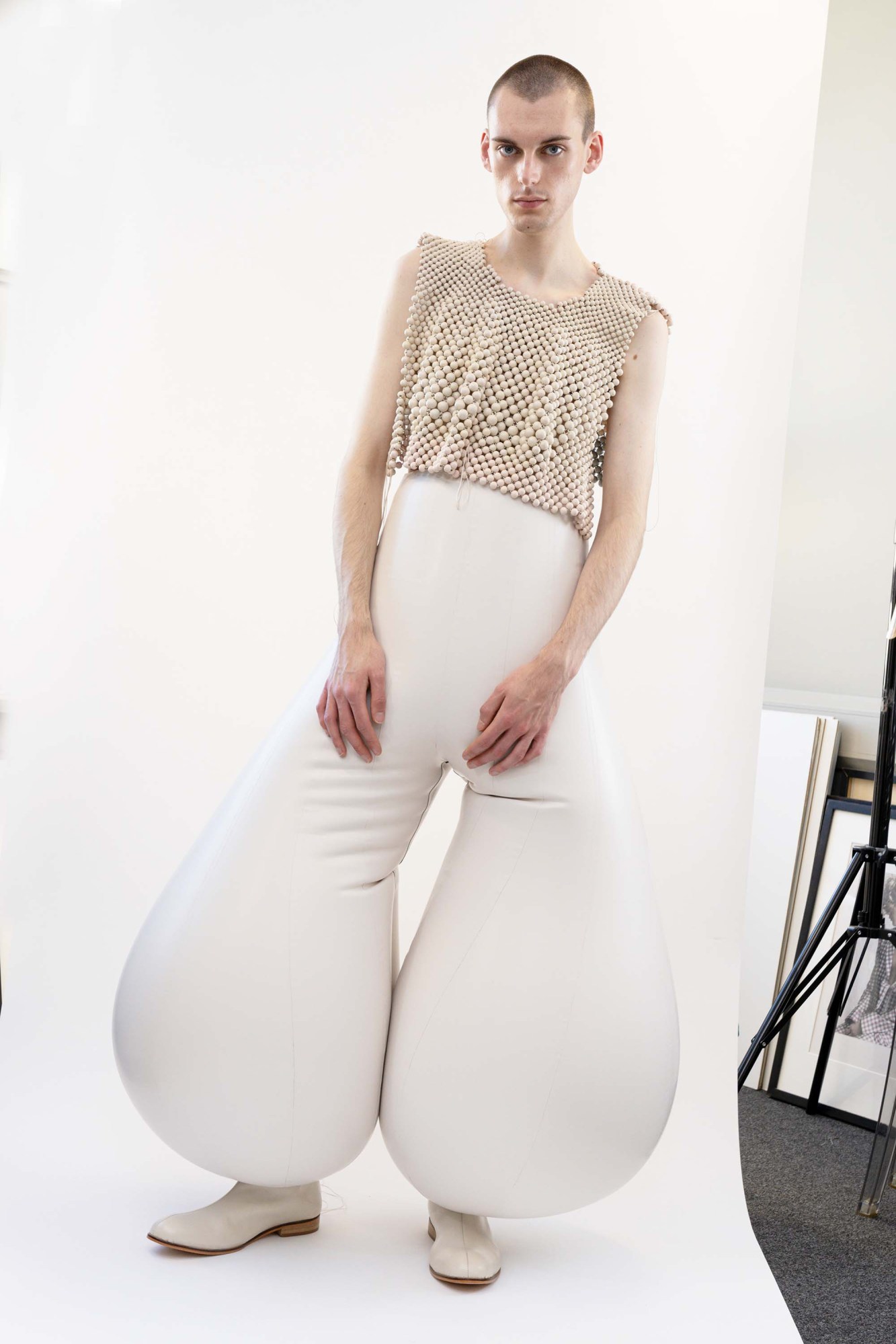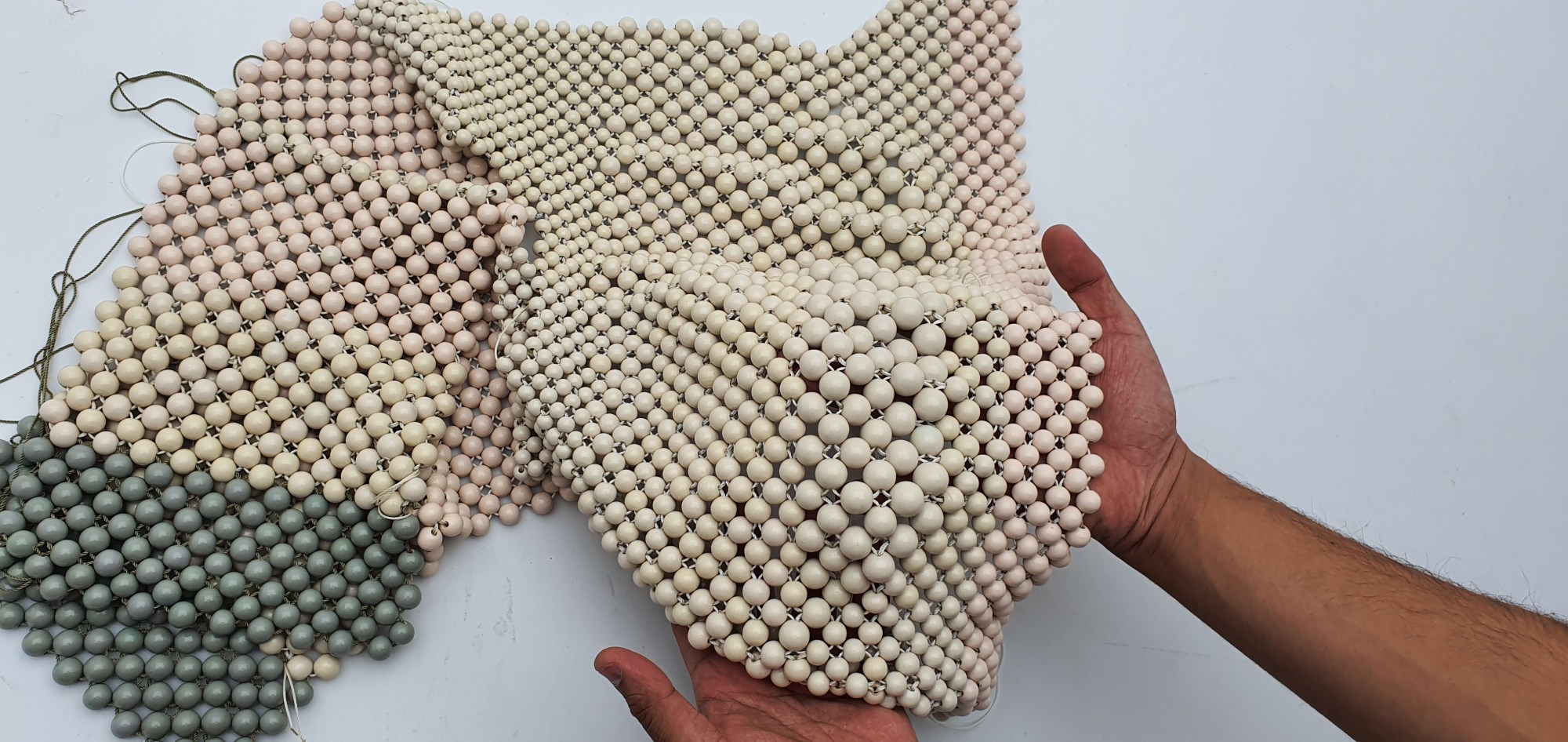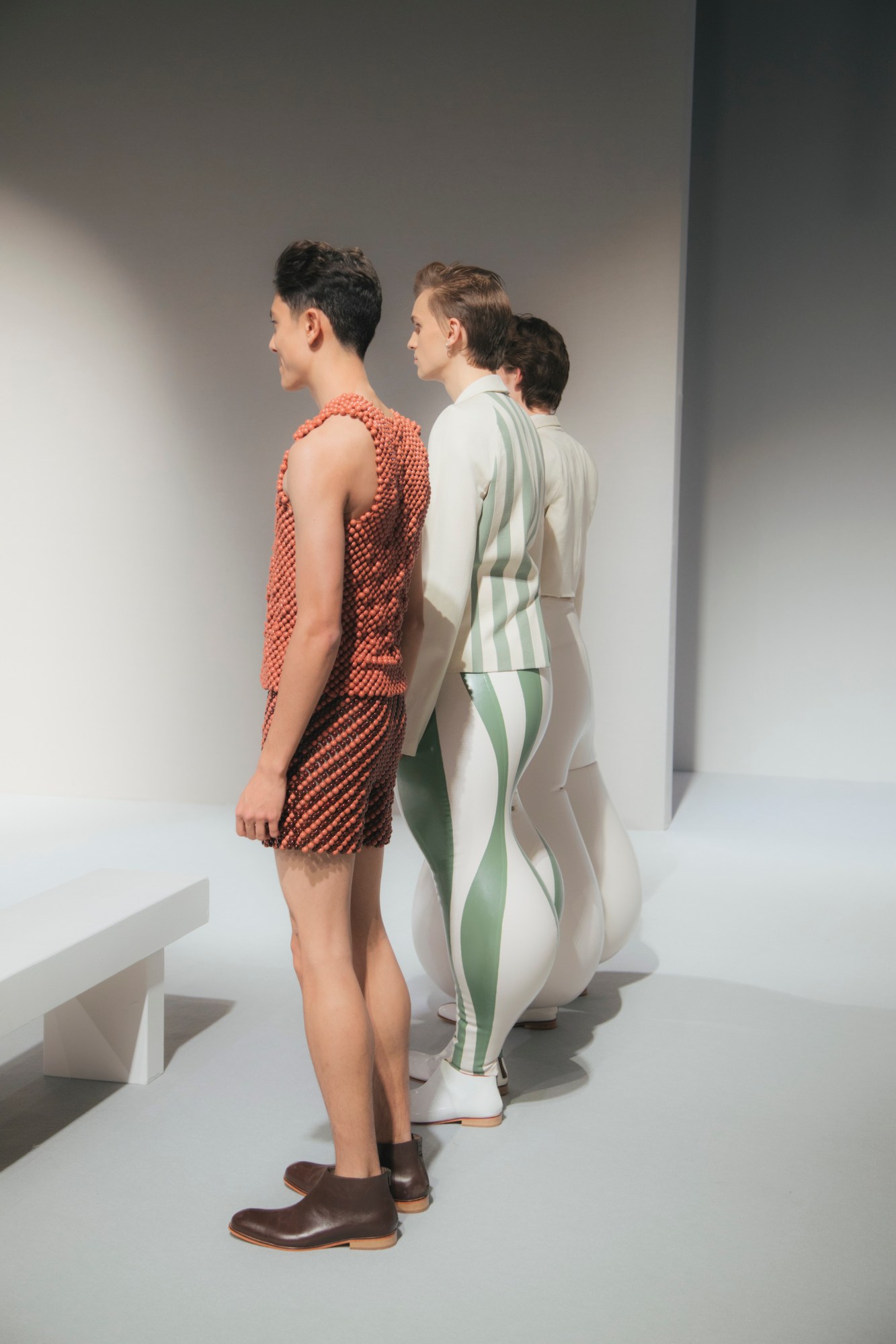This week, 26-year-old Harikrishnan became the latest London student to go viral with an astonishing graduate collection. As part of London College of Fashion’s MA degree show, Harikrishnan presented menswear that, at its most simple was elegant and wearable, and at its most dramatic was pure art. Among intricate beaded two-piece vests and shorts, and boxy bolero jackets, were pairs of wildly inflated latex trousers. Instagram went mad, as it is wont to do.
The idea first came to Harikrishnan while playing with his dog. “I was aware of how a dog’s’ vision differed compared to humans, but the interesting aspect was the exaggeration of objects viewed from such a low angle, reminding me of fisheye lens images,” he says, a day after the show. “The thought of him seeing me perhaps as a giant figure, or not seeing my head at all. So I decided to visually reimagine the people around me.”
Originally from Kerala, one of India’s southern states, Harikrishnan completed a BA in Fashion Design at the National Institute of Fashion Technology, India, and assisted the 2015 Woolmark Prize Winner, Suket Dhir, in Delhi before enrolling at LCF. For his graduate collection, Harikrishnan wanted to give his audience a new perspective on the way a garment can be worn. “I wanted to seek the essence of the human form in a dimension that goes beyond the normal — yet not grotesque,” he says. “It celebrates the extremes of the human form.”

As the natural end-point of your studies, what did you most want to say with this collection?
I wanted to critique the current proportions in fashion. From the beginning, I wanted to create something that speaks to the viewer rather than just pass through their visual horizon. I wanted their eyes to stop and think for once. I believe that people will start questioning the usual only when they see the unusual.
It’s the inflating trousers that really caught people’s attention. How did you create these?
My cutting methodology for inflatables was adopted from “morphing”, the traditional method of distorting photographs by assembling fragments of the same subject taken at different perspectives, similar to the approach of artist Jean-Paul Goude. The final 3D forms of trousers were visualised and transformed into mini clay models and then sliced into fragments. These fragments were graded and cut in latex, stuck together in various angles with high contouring to create these anatomically impossible forms. To take this visually forward approach, the panels were arranged in contrasting stripes making the forms even more three-dimensional, creating a set of moving sculptures as well as directing the eye movement of viewers. It took nearly 48 hours to complete a single pair of trousers. Once completed, air is pumped in through a 7mm free flow inflation valve attached to the bottom.

Do you see these as a fashion item or something that simply pushes forward the idea of what clothing can be?
As I live in an era where I am visually exposed to more than is required, I often find myself in a state of visual neutrality and dilution. Especially in fashion, I see the same imagery and similar proportions everywhere. If this is the case, my thoughts are going to be one-dimensional and mundane. The way we see the body completely depends on where we see the body from. Like the Venus of Willendorf, which was sculpted in the proportions that a person might see looking at their own body. That way of looking at oneself changes the way we perceive our bodies. I want to create visual imagery far away from neutrality and make people think and question the relevance of current proportions. Therefore the psychology of familiarity and unfamiliarity was manipulated in this collection to create imagery which elevates the clothing to a sculptural level, forcing the viewer to stop and think.
Tell us a little bit about your use of latex.
I didn’t want to get into the fetish space. The moment you use latex it instantaneously gives a fetish vibe. This was something I wanted to avoid from the beginning and I had to experiment with patterns, colours to break out from the traditional fetish narrative.
There’s naturally a comparison to be drawn between your work and Fredrik Tjærandsen’s. What do you make of his inflatable balloon designs?
His creations were breathtakingly beautiful. I think I was doing my trials when he showcased his collection at CSM. It was interesting to see his take on inflatables.

The beaded vests are also very beautiful and intricate. Did you make all this by hand?
The beaded outfits are developed as a part of my collaboration with the ancient GI TAGGED toy-making craft community of South India. Through wearables, I attempted to redefine and reinterpret the toy-making craft in the context of fashion sustainability.
The community is involved in handmaking beads, polishing wood with pine wax, and lacquering. However, it was a very tough journey, primarily because of the language barrier. Also, I had to teach them to create patterns and link them, which was something new for them. It took some time for them to adapt and learn.
I come from a country of thousands of regional crafts. Some are centuries old and are practised by only a handful of people today. After joining my BA at the National Institute in 2012, I worked with a lot of craftsmen and women from different parts of the country. Often, people think of crafts becoming irrelevant due to lack of progression and interpretations, but I wish people would perceive it as precious, like a pearl. This might sound odd. But these days something which is 110% handmade should be given a “precious” tag.
What’s next for you?
I want my work to start new dialogues and give fresh perspectives in design and fashion. I also want to collaborate with Jean-Paul Goude (in my dreams)!


